| |
| AALBC.com BEST SELLING BOOKS |
|
To view the top 25 selling fiction and nonfiction books from November 1st through December 31st, visit:http://www.aalbc.com/books/novdec_2009.htm
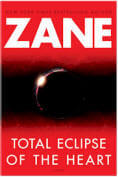 1 - Total Eclipse of the Heart by Zane 1 - Total Eclipse of the Heart by Zane
2 - Purple Panties: An Eroticanoir.com Anthology by Zane (Editor)
3 - Missionary No More: Purple Panties 2 by Zane (Editor)
4 - Head Bangers: An APF Sexcapade by Zane
5 - Push: A Novel by Sapphire
|
| |
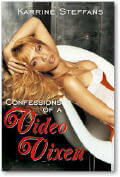 1 - Confessions of a Video Vixen by Karrine Steffans 1 - Confessions of a Video Vixen by Karrine Steffans
2 - The Isis Papers: The Keys to the Colors by Frances Cress Welsin
3 - Cool, Confident and Strong: 52 Power Moves for Girls by Cassandra Mack
4 - Dear G-Spot: Straight Talk About Sex and Love by Zane
5 - Christopher Columbus and the Afrikan Holocaust: Slavery and the Rise of European Capitalism by Dr. John Henrik Clarke |
| |
| AUTHORS YOU SHOULD KNOW |
| |
|
Allen B. Ballard, Professor of History and Africana Studies at SUNY-Albany, holds an undergraduate degree, Phi Beta Kappa, from Kenyon College in Ohio and a Ph.D. degree in government from Harvard University.
In addition to the novel Where I'm Bound, Dr. Ballard has published two nonfiction books, The Education of Black People (Harper and Row, 1973) and One More Day's Journey: The Story of a Family and a People (McGraw Hill, 1984). His articles have appeared in scholarly and popular journals, including the New York Times Magazine. (Photo of Ballard as a Central High of Philadelphia Senior)
|
 Ralph Waldo Ellison Ralph Waldo Ellison
http://authors.aalbc.com/ellison.htmEllison was highly regarded by both the literary and academic worlds. He was Fellow of the American Academy in Rome from 1955 to 1957 and on his return held several visiting professorships; latterly being Albert Schweitzer Professor in the Humanities at New York University. He received the United States Medal of Freedom in 1969, became Chevalier de l'ordre des Arts et Lettres in 1970, and received the National Medal of Arts in 1985. Ralph Ellison died in 1994 [of cancer, April 16, 1994], survived by his wife of forty-eight years [married Fanny McConnell, July, 1946]. In his obituary, The Independent declared him "a great gentleman, indeed a noble man, and the remarkable mythologising author of ... the great American Negro novel." Check out Ellison's latest novel Three Days Before the Shooting (January 26, 2010).
|
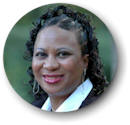 Vanessa Davis Griggs Vanessa Davis Griggs
http://aalbc.com/authors/vanessa_davis_griggs.html"God's Cheerleader", Vanessa Davis Griggs is an author and motivational speaker who adores the power of words both written and spoken. At the end of 1996, this former BellSouth employee left 18 years of service stepping out on faith and decided to pursue her purpose and passion--writing. Proving out Proverbs 18:16, A man's gift maketh room for him, and bringeth him before great men, she began her own company (Free To Soar) emphasizing the taking off of limits as she travels inspiring and encouraging others--both young and old--to take flight like an eagle and do the same.Note: The mother of AALBC.com's founder recently discovered Griggs' and has read all of Griggs' books in a just a couple of months and is anxiously awaiting Griggs' next novel, The Truth Is The Light (May 2010) |
| |
| |
| AALBC.com BOOK REVIEWS (Fiction) |
| |
 Post Black: How a New Generation Is Redefining African-American Identity by Ytasha L. Womack Post Black: How a New Generation Is Redefining African-American Identity by Ytasha L. Womack
http://aalbc.com/reviews/post_black.htmlPost Black opens with the most evocative and entertaining “will not” disclaimer since The Las Poets’ rhythmical rant in “The Revolution Will Not Be Televised” delineated a laundry list of what the impending black insurrection would not involve. Apparently, that coup d’etat must have long since transpired, since author Ytasha Womack now addresses not the mainstream concerns of the oppressed black masses, but those of a diversity of lesser-acknowledged slices of African-Americana, like African and Caribbean immigrants, Buppies (Black Urban Professionals), black gays and lesbians, black transgendered individuals, the biracial community, black bi-culturals, African-American feminists, the Talented Tenth and black Buddhists.
|
 Resurrecting Midnight by Eric Jerome Dickey Resurrecting Midnight by Eric Jerome Dickey
http://aalbc.com/reviews/resurrecting_midnight.htmlI loved everything about the novel. The characters, the plot, are all winning. I am surprised that I loved the novel as well as I did for I don’t usually go for the international assassin /spy type stories. Now, I can watch and enjoy a Tom Clancy type book when it is turned into a movie, but in its book form I am bored stupid. The difference between Resurrecting Midnight and those books is Dickey. While all of the weapons, action and high tech gadgets are all here, Dickey gave Gideon personal drama to deal with as well. If you have followed Dickey as long as I have, from his first novel (Sister, Sister) to now, he is the master of personal drama, the absolute best. When it comes to crafting a story with memorable characters in messy situations, Dickey is in a class by himself. Couple this talent with an assassin/spy based story, the result is in an infectious, damn hard to put down book.
|
 Sleep Don't Come Easy by Victor McGlothin & J.D. Mason Sleep Don't Come Easy by Victor McGlothin & J.D. Mason
http://aalbc.com/reviews/sleep_dont_come_easy.htmlSleep Don't Come Easy is a superb, worthwhile anthology that almost got past me. I'm happy that it did not. Mason continues to enthrall me. McGlothin turned out to be a pleasant surprise. Reading this wonderful anthology did get me to look around and ask where all of my beautiful detectives and their unsolved murders and mayhem went. At least Sleep Don''t Come Easy provided me a respite and a little bit of hope.
|
 Sassy by Gloria Mallette Sassy by Gloria Mallette
http://aalbc.com/reviews/sassy.htmSassy has some wonderful qualities that are overshadowed by the grammar/spelling errors. I loved all of Mallette's previous novels with varying degrees. I'm going to continue to read Mallette in the future. I hope, no, I PRAY that Mallette employs copy editor on her next outing, because her stories deserve better treatment than the one Sassy received.
|
 Invasion of the Baby Daddy Dr. John Bell Invasion of the Baby Daddy Dr. John Bell
http://aalbc.com/reviews/invasion_of_the_baby_daddy.html In the debut novel “Invasion of the Baby Daddy,” debut author Dr. John Bell tells of the personal relationship struggles of protagonist Mark Sands. Though Sands is a well-mannered, God-fearing, and well-educated black man, his shyness and a lack of available women make finding his soul mate a challenge. The only women he seems to attract are the ones who already have children, and worst yet a “baby daddy” in their lives. That all changes one Sunday during a church visit when he meets the lovely Rachel and makes an instant connection. But as they say, if something seems too good to be true, it probably is.
|
| |
| |
| AALBC.com BOOK REVIEWS (Non-Fiction) |
| |
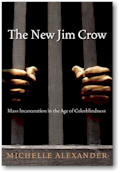 The New Jim Crow: Mass Incarceration in the Age of Colorblindness by Michelle Alexander The New Jim Crow: Mass Incarceration in the Age of Colorblindness by Michelle Alexander
http://aalbc.com/reviews/new_jim_crow.htmlNow that bloom has fallen off the rose of the Obama Administration, most black folks are beginning to wake up to the fact that his election isn’t about to turn the country into a post-racial utopia any time soon. To the contrary, attorney Michelle Alexander argues that in recent decades America has increasingly, and ever so subtly, adopted a color-coded caste system where minorities are targeted, stigmatized and marginalized by the criminal justice system.Alexander, a Professor of Law at Ohio State University, makes her very persuasive case in The New Jim Crow: Mass Incarceration in the Age of Colorblindness, a scathing indictment of the widespread practice of selective enforcement of draconian drug laws. Ostensibly, the aim of the U.S. government has been not only to warehouse masses of African-American males behind bars, but to relegate them permanently to a subordinate stratum of society even after they’re paroled. |
 Post Black: How a New Generation Is Redefining African-American Identity by Ytasha L. Womack Post Black: How a New Generation Is Redefining African-American Identity by Ytasha L. Womack
http://aalbc.com/reviews/post_black.htmlAs she explains it, “Post Black is about emerging groups, both vibrant and forceful, whose voices and issues are entrenched in communities but are not part of the social agenda, public discussion, national politics, or collective identity.” Ms. Womack’s salient point is that African-Americans are long past the point of comprising one monolithic interest group. Excuse me for already feeling that way 50 years ago.Nonetheless, the book is well-written and sensibly organized with chapters devoted to each of the aforementioned “new” constituencies. However, the author bases her conclusions about her assorted subjects more on anecdotal evidence and her own personal feelings than on any social scientific data or empirical research |
| |
| |
| AALBC.com INTERVIEWS |
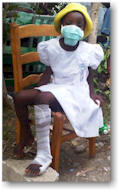 Soledad O'Brien - Eyewitness Report on the Haitian Relief Effort Soledad O'Brien - Eyewitness Report on the Haitian Relief Effort
http://aalbc.com/reviews/soledad_obrien_haiti.html
In the wake of the Haitian earthquake, CNN’s Soledad O’Brien rushed to the region to deliver the same sort of high-quality, eyewitness coverage that she has dependably broadcast in the past on location after location from such disasters area as the Indian Ocean Tsunami and Hurricane Katrina. Because of her seemingly effortless style and her People Magazine’s 50 Most Beautiful People List looks, what tends to get lost about this intrepid, Emmy-winning reporter is that she’s also a Harvard grad with a keen intellect, a razor sharp wit, a great sense of humor and an ever-inquiring mind.
|
|
 Chiwetel Ejiofor- The “Endgame” Interview Chiwetel Ejiofor- The “Endgame” Interview
http://aalbc.com/reviews/chiwetel_ejiofor.html
Chiwetel Ejiofor was born in London on July 10, 1977 to Nigerian immigrants, Arinze, a doctor, and Obiajulu Ejiofor, a pharmacist. By the age of 13, he was already appearing in numerous school and National Youth Theatre productions, and he subsequently attended the London Academy of Music and Dramatic Arts, as well as Dulwich College.
In 1996, the versatile stage thespian caught the attention of Stephen Spielberg who cast him in Amistad. Chiwetel returned to the stage before making another big splash onscreen in the critically-acclaimed thriller Dirty Pretty Things. He went on to co-star in Love Actually, Slow Burn, She Hate Me and Melinda and Melinda. His more recent film credits include 2012, American Gangster, Talk to Me, Kinky Boots, Four Brothers Inside Man, Redbelt and Children of Men.
Here, he talks about his life, his career, and his powerful performance in Endgame, for which he just landed a Golden Globe nomination
|
 Cornel West - The “Brother West” Interview Cornel West - The “Brother West” Interview
http://aalbc.com/reviews/cornel_west1.htm
One of America's most provocative public intellectuals, Dr. Cornel Ronald West has been a champion for racial justice since childhood. His writing, speaking, and teaching weave together the traditions of the black Baptist Church, progressive politics, and jazz.
Though currently the Class of 1943 Professor at Princeton University, Dr. West first burst onto the national scene in 1993 upon the publication of his best seller, Race Matters, a searing analysis of racism in American democracy. In his long-awaited autobiography, BROTHER WEST: Living and Loving Out Loud, he now offers a compelling exploration of his heart behind the human mind.
Here, he answers questions from readers and talks about the book which explores such themes as Faith, Family, Philosophy, Love and Service.
|
 Cathy Hughes - The TV One Interview Cathy Hughes - The TV One Interview
http://aalbc.com/reviews/cathy_hughes.htmCatherine Elizabeth Woods Hughes was born in Omaha, Nebraska where she attended Creighton University and the University of Nebraska. But before graduating, she began working at KOWH, a local black radio station where she handled assorted jobs en route to becoming well-known in the industry.By 1975, she was named the radio station's general manager, and four years after that, she and her husband, Dewey Hughes, purchased a small radio station, WOL, thus creating Radio One. When the marriage failed, Hughes purchased her husband's half of the business, giving up her apartment and sleeping at the station in order to make ends meet. Over time, she turned it into a profitable operation, while going on the air herself to host a talk show which would blossom into a hit program. Today, the popular media mogul is the first black woman in the U.S. to head a company whose stock [Symbol: ROIA] is publicly-traded on an exchange. Here, Cathy talks about her career, about TV One which is celebrating its 5th year anniversary, and about hosting the celebrity interview show TV One on One. |
 The 9th Wonder Interview The 9th Wonder Interview
http://aalbc.com/reviews/9th_wonder.htm
Born Patrick Denard Douthit in Winston-Salem, NC on January 15, 1975, 9th Wonder is a Grammy Award-winning producer, DJ, college lecturer and social activist. Since his introduction to hip-hop in 1982, 9th has been immersed in the music and the culture of the art form, while gaining experience in music theory throughout middle and high school.
9th was recently appointed the National Ambassador for Hip-Hop Relations and Culture by NAACP President Ben Jealous to lead a board of Ph.D's, and hip-hop artists. Here he discusses his life, career and musical philosophy.
|
| |
| |
| AALBC.com FILM REVIEWS |
| |
 Off and Running Off and Running
http://aalbc.com/reviews/off_and_running.html
When Tovah Klein emigrated from Israel to the United States, she met and fell in love with Midwesterner Travis Cloud. The smitten lesbians subsequently settled in a trendy section of Brooklyn together where they would raise their three adopted children as Jews, sending them to Hebrew school.
What might strike some as strange about this arrangement is that none of the kids had a Jewish background. Rafi, of mixed-ethnicity, was born drug-addicted and with an STD, while his slightly younger sister Avery’s parents were African-Americans from Texas, and little Zay-Zay was a cuddly, Korean orphan.
|
| |
| |
| AALBC.com ARTICLES |
| |
 Kam Williams’ Annual Assessment of the Best (and Worst) in Black Cinema Kam Williams’ Annual Assessment of the Best (and Worst) in Black Cinema
http://aalbc.com/reviews/blacktrospective_2009.html
The very best African-American film fare from 2009 was released early on, starting with Notorious, Medicine for Melancholy and Not Easily Broken, all of which arrived in theaters last January. That same month, Precious made its big splash at the Sundance Festival, walking away with a trio of awards: best picture, director (Lee Daniels) and actress (Mo’Nique).
While a bounty of other excellent African-American oriented offerings subsequently arrived over the course of the year, none ever matched Lee Daniels’ tour de force in terms of either emotional depth or raw intensity. Plus, Precious featured Oscar-quality work by Gabby Sidibe in the title role and by Mo’Nique as her relentlessly-abusive mother. And Daniels also coaxed career screen performances out of his motley cast, from Paula Patton to Mariah Carey to Lenny Kravitz to Sherri Shepherd.
So, without further fanfare, check out this critic’s humble assessment of the best and the worst in Black Cinema for 2009.
|
| |
| |
| AALBC.com RECOMMENDS |
| |
 Nobody But You - A Grayson Friends Novel by Francis Ray Nobody But You - A Grayson Friends Novel by Francis Ray
http://www.authors.aalbc.com/francis_ray.htm
NASCAR champion Cameron Dunlap is poised to win this year's Sprint Cup. But being a successful race-car driver comes with a price. Cameron knows that his profession puts him at high risk. Thankfully, his latest visit to the hospital left him intact. That is, until he bumps into Caitlin Lawrence...and is thrust back into his painful past.
Caitlin left Cameron at the altar because she could never accept Cameron's fast and furious existence. The threat of losing him on the racetrack was just too much for Caitlin — and the young son Cameron never knew he had. Now that this chance meeting has changed their lives forever, will Caitlin and Cameron find a way to recapture what might have been?
|
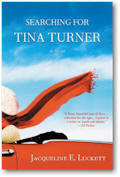 Searching for Tina Turner by Jacqueline E. Luckett Searching for Tina Turner by Jacqueline E. Luckett
http://www.amazon.com/exec/obidos/ASIN/0446542962/ref=nosim/aalbccom-20On the surface, Lena Spencer appears to have it all. She and her wealthy husband Randall have two wonderful children, and they live a life of luxury. In reality, however, Lena finds that happiness is elusive. Randall is emotionally distant, her son has developed a drug habit, and her daughter is disgusted by her mother's "overbearing behavior." When Randall decides that he's had enough of marriage counseling, he offers his wife an ultimatum: "Be grateful for all I've done for you or leave." Lena, realizing that money can't solve her problems and that her husband is no longer the man she married, decides to choose the latter. Drawing strength from Tina Turner's life story,Searching for Tina Turner is Lena's struggle to find herself after 25 years of being a wife and mother. |
 Why I Love Men: The Joys of Dating by J.J. Smith Why I Love Men: The Joys of Dating by J.J. Smith
http://authors.aalbc.com/jjsmith.htm"J.J. Smith cuts through the chatter with some tried-and-true cures to our relationship malaise. There are other books of this type but what separates J.J. Smith's book from the others is she dares to tell the raw truth about the power of sex. The book is written in a conversational tone that grabs the reader with charm, style, almost like an intimate whisper from a sista friend." —Robert Fleming, AALBC.com |
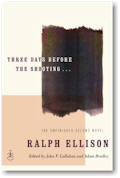 Three Days Before the Shooting by Ralph Ellison Three Days Before the Shooting by Ralph Ellison
http://aalbc.com/authors/ellison.htm
At his death in 1994, Ralph Ellison left behind roughly two thousand pages of his unfinished second novel, which he had spent nearly four decades writing. Long awaited, it was to have been the work Ellison intended to follow his masterpiece, Invisible Man. Five years later, Random House published Juneteenth, drawn from the central narrative of Ellison’s unfinished epic.
Three Days Before the Shooting . . . gathers together in one volume, for the first time, all the parts of that planned opus, including three major sequences never before published. Set in the frame of a deathbed vigil, the story is a gripping multigenerational saga centered on the assassination of the controversial, race-baiting U.S. senator Adam Sunraider, who’s being tended to by “Daddy” Hickman, the elderly black jazz musician turned preacher who raised the orphan Sunraider as a light-skinned black in rural Georgia. Presented in their unexpurgated, provisional state, the narrative sequences form a deeply poetic, moving, and profoundly entertaining book, brimming with humor and tension, composed in Ellison’s magical jazz-inspired prose style and marked by his incomparable ear for vernacular speech. |
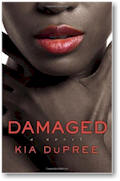 Damaged by Kia DuPree Damaged by Kia DuPree
http://www.amazon.com/exec/obidos/ASIN/0446547751/ref=nosim/aalbccom-20Camille Logan feels trapped. After she is sexually and emotionally abused by her foster parents, she turns to the one person she knows she can trust--her boyfriend Chu, a mid-level drug dealer. But when life finally starts looking up for Camille, Chu is brutally murdered. Again feeling abandoned and helpless, and refusing to return to the system, Camille finds herself living with a stable of women in a tiny run-down apartment building in Washington, D.C., working for Nut, a deranged pimp. Fed up with her life, Camille is forced to right her wrongs, and slowly learns that her past does not necessarily determine her future.
|
 Best Book Trailer of 2009 - Booker T. Mattison's Unsigned Hype Best Book Trailer of 2009 - Booker T. Mattison's Unsigned Hype
http://aalbc.com/authors/booker.htm
Told from the perspective of ambitious, aspiring hip-hop DJ and producer Tory Tyson, Unsigned Hype takes readers onto the streets of New York and gives them a glimpse into the realities of life on the block. Author Booker T. Mattison knows this world well, having been mesmerized the first time he heard the beats and rhymes of rap in 1979. Since then, he's embraced this world of hip-hop, as a filmmaker and writing and directing music videos that have aired on BET, MTV Europe and TBN.
The story of Tory Tyson is an inspiring one that pulls back the curtain on the urban young-adult experience, with its fresh voice and true-to-life rendering of the hip-hop world. Capturing the delight of teen and older adult readers alike, Booker T. Mattison delivers an insightful and inspiring story that trumpets hope and is staged to become an anthem for this often misunderstood generation.
|
| |
| |
| EVENTS |
| |
 The National Black Book Festival The National Black Book Festival
http://www.nationalblackbookfestival.com/overview.htm
The National Black Book Festival (NBBF) is an annual event, sponsored by Cushcity.com, the world's largest African-American retailer online. The event attracts a wide array of authors, publishers, book clubs, libraries and individual readers from the Southwest U.S. and nationwide. NBBF 2010 will be held at the Crowne Plaza Hotel in Downtown Houston.
The event features a pavilion of authors, including those who are notable and new. Book signing and discussion sessions with featured authors, workshops and seminars, a spoken word poetry slam and book club give-aways are just a few of the exciting featured activities at NBBF. Authors will be grouped according to genre and there are 17 genres that will be represented. The Festival is open to the public and admission is $5.00 per day for adults and teens. Admission is FREE for children under the age of 12.
Be sure to check out AALBC.com's Founder in the Marketing Your Book On a Limited Budget seminar; presentated with Oswald Scott, Author and Attorney and Dana Pittman of Nia Promotions.
|
 The Annual Self-Publishing Symposium The Annual Self-Publishing Symposium
http://aspicomm.com/selfpublishingsymposiumJoin us March 7th, 2010 at The Schomburg Center for Research in Black Culture to take advantage of what this important business event can do for your publishing company. Whether you’re a self-published author, small/independent press or writer considering self-publishing, you won’t want to miss this opportunity to; (1) to Learn successful business strategies from industry experts, (2) Network with professionals and make powerful connections, and (3) Grow your business to new heights. AALBC.com of a proud sponsor and particpant of the 2010 Self-Publishing Symposium. |
 The Tenth National Black Writers' Conference The Tenth National Black Writers' Conference
http://www.nationalblackwritersconference.org/home.htmlThe Tenth National Black Writers' Conference, first presented in 1986 as a result of the visionary leadership of the late John O. Killens, will be held March 25-28, 2010. Toni Morrison, will be the Honorary Chair. The theme of the National Black Writers' Conference is And Then We Heard the Thunder: Black Writers Reconstructing Memories and Lighting the Way. Through a series of panel discussions, roundtables, author readings and storytelling, the National Black Writers' Conference will use the metaphor of thunder, memory and light to examine the historical representation of the literature of Black writers and the representation of new and future directions for contemporary and emerging literary voices. With Toni Morrison as the Honorary Chair, the National Black Writers' Conference will also honor Amiri Baraka, Kamau Brathwaite and Dr. Edison O. Jackson. Black writers will come from throughout America, the Caribbean, Europe and Africa.Be sure to check out the AALBC.com sponsored reading featuring authors Allen B. Ballard, Victor LaValle and Dolen Perkins-Valdez.
|
| |
| |
INTERESTING DISCUSSION BOARD POSTS
|
| |
Black Women and the names of their children...?
http://aalbc.com/tc/index.php?/topic/18-black-women-and-the-names-of-their-children/
“Yeah, it's pretty sad. A post 1970 generation of Negroes have been ghettoized with these silly coonish names. Negroes were desperate to separate themselves from white America and it's racism, so, in their misguided attempt to rename themselves with non-western sounding names, they initially used authentic African names. But soon the pandemic craze of haphazardly making up so-called African sounding names became the norm. . . ” —Xeon
|
| |
What is everyone reading?
http://aalbc.com/tc/index.php?/topic/28-what-is-everyone-reading/
“Well, I'll go first. I'm reading Victoire by Maryse Conde, which is a sort of memoir, biography, historical fiction novel. You all know how much I love Maryse Conde. I find her brilliant. She's one of my all time favorite writers of all times. So far, the small novel is turning out to be magnificent. I'll keep you posted.” —Thumper
|
| |
| |
BOOK INDUSTRY NEWS
|
Visit Daily to get the latest new in the world of books
http://aalbc.com/book_industry_news.php
|
| |
 Freedom on the Menu: The Greensboro Sit-Ins Freedom on the Menu: The Greensboro Sit-Ins
http://childrensbooks.about.com/b/2010/02/01/freedom-on-the-menu.htmToday is the 50th anniversary of the Greensboro, North Carolina, sit-ins. On February 1, 1960, four African American college students staged a sit-in at the Greensboro Woolworth's lunch counter. They did so to protest the store's policy of serving "the white trade only" for lunch. Many of the heroes and heroines of the Civil Rights Movement were ordinary people who chose to take a stand against injustice. To learn more about the impact of the actions of the "Greensboro Four" and those who supported them, I recommend Freedom on the Menu: The Greensboro Sit-Ins for ages 7-12. |
 Publisher Wins Fight With Amazon Over E-Books Publisher Wins Fight With Amazon Over E-Books
http://www.nytimes.com/2010/02/01/technology/companies/01amazonweb.html“We have expressed our strong disagreement and the seriousness of our disagreement by temporarily ceasing the sale of all Macmillan titles,” Amazon said. “We want you to know that ultimately, however, we will have to capitulate and accept Macmillan’s terms because Macmillan has a monopoly over their own titles, and we will want to offer them to you even at prices we believe are needlessly high for e-books.” |
 Howard Zinn, Historian, Is Dead at 87 Howard Zinn, Historian, Is Dead at 87
http://www.nytimes.com/2010/01/29/us/29zinn.html?partner=rss&emc=rssMr. Zinn was the author of "A People's History of the United States," which inspired a generation of high school and college students to rethink American history. (New York Times Fri, 29 Jan 2010 05:49:01 GMT) |
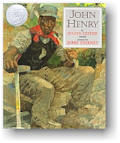 Spotlight on John Henry Spotlight on John Henry
http://childrensbooks.about.com/b/2010/01/27/spotlight-on-john-henry.htm The children's picture book John Henry combines a fascinating tale by Julius Lester with award-winning artwork by Jerry Pinkney, the winner of the 2010 Randolph Caldecott Medal for The Lion and the Mouse. John Henry was designated a 1995 Caldecott Honor Book for the excellence of Pinkney's illustrations. (About.com Fri, 29 Jan 2010 06:00:00 EST)
|
| |
| |
| AALBC.com INFORMATION AND HOUSEKEEPING |
AALBC.com has started to roll out some enhancements to our website. You may have already noticed the redesigned layout and homepage.
 Other enhancements include an complete overhaul of our discussions boards. The new features are too numerous to mention here in detail but include the ability to use your FaceBook ID to participate in the discussions.You can also use your google, twitter, Yahoo, AIM account to join AALBC.com and post comments on our reviews and other pages. It is also the fastest way to get your photo on AALBC.com :-) Look out for additional enhancements and applications including an iPhone application, and a searchable database for book stores, book clubs, and publishing industry professionals. Other enhancements include an complete overhaul of our discussions boards. The new features are too numerous to mention here in detail but include the ability to use your FaceBook ID to participate in the discussions.You can also use your google, twitter, Yahoo, AIM account to join AALBC.com and post comments on our reviews and other pages. It is also the fastest way to get your photo on AALBC.com :-) Look out for additional enhancements and applications including an iPhone application, and a searchable database for book stores, book clubs, and publishing industry professionals.
|
Answer to a Frequently asked Question:
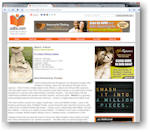 “on:p>Basically AALBC.com reviews happen one of two ways; “on:p>Basically AALBC.com reviews happen one of two ways;
”
Basically AALBC.com reviews happen one of two ways;
(1) Commissioned and paid for by the author or publisher - Guaranteed 6 weeks or less
(2) Submitted for consideration - No guarantee the book will be reviewed
Please visit http://www.aalbc.com/reviews/reviewer_guidlines.htm for complete details
|
Troy Johnsonr /> President, AALBC.com, LLC356
Toll Free: 866-603-8394
Email: troy@aalbc.comPeace,
Troy
|



 1 - Total Eclipse of the Heart by Zane
1 - Total Eclipse of the Heart by Zane 1 - Confessions of a Video Vixen by Karrine Steffans
1 - Confessions of a Video Vixen by Karrine Steffans
 Ralph Waldo Ellison
Ralph Waldo Ellison 









 Cornel West - The “Brother West” Interview
Cornel West - The “Brother West” Interview 




 Searching for Tina Turner by Jacqueline E. Luckett
Searching for Tina Turner by Jacqueline E. Luckett
 Three Days Before the Shooting by Ralph Ellison
Three Days Before the Shooting by Ralph Ellison Damaged by Kia DuPree
Damaged by Kia DuPree




 Publisher Wins Fight With Amazon Over E-Books
Publisher Wins Fight With Amazon Over E-Books 
 Spotlight on John Henry
Spotlight on John Henry Other enhancements include an complete overhaul of our discussions boards. The new features are too numerous to mention here in detail but include the ability to use your FaceBook ID to participate in the discussions.You can also use your google, twitter, Yahoo, AIM account to join AALBC.com and post comments on our reviews and other pages. It is also the fastest way to get your photo on AALBC.com :-) Look out for additional enhancements and applications including an iPhone application, and a searchable database for book stores, book clubs, and publishing industry professionals.
Other enhancements include an complete overhaul of our discussions boards. The new features are too numerous to mention here in detail but include the ability to use your FaceBook ID to participate in the discussions.You can also use your google, twitter, Yahoo, AIM account to join AALBC.com and post comments on our reviews and other pages. It is also the fastest way to get your photo on AALBC.com :-) Look out for additional enhancements and applications including an iPhone application, and a searchable database for book stores, book clubs, and publishing industry professionals. “on:p>Basically AALBC.com reviews happen one of two ways;
“on:p>Basically AALBC.com reviews happen one of two ways;